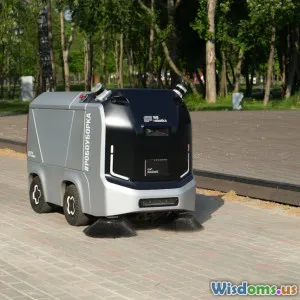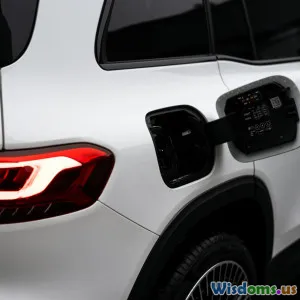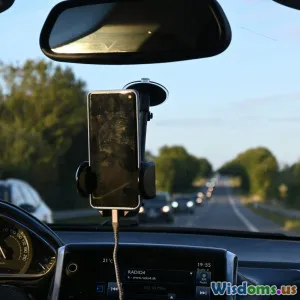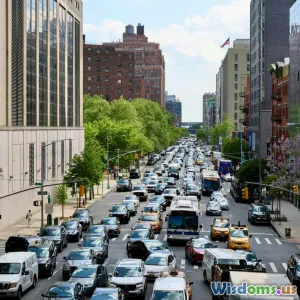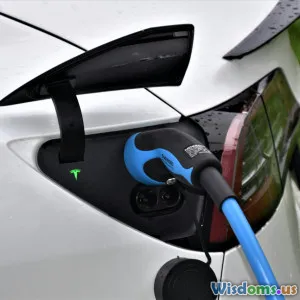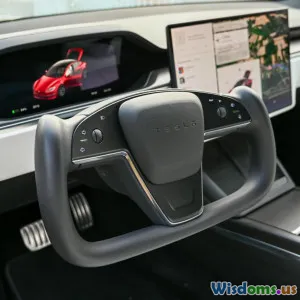
Top Five Myths About Autonomous Cars and the Surprising Truths
8 min read Debunk the top myths about autonomous cars and discover the real facts behind this transformative technology. (0 Reviews)
Top Five Myths About Autonomous Cars and the Surprising Truths
Autonomous cars—vehicles capable of driving themselves without human intervention—have moved from science fiction to tangible reality over the past decade. Media buzz and public discourse have generated plenty of hype but also misinformation. As we edge closer to wider adoption of these driverless vehicles, it's imperative to sift fact from fiction.
In this article, we debunk five pervasive myths surrounding autonomous cars and reveal the surprising truths that actually define this groundbreaking technology.
Myth 1: Autonomous Cars Are Inevitably Unsafe
Common misconception: Self-driving cars are more prone to accidents and pose new safety risks.
The truth: Autonomous vehicles (AVs) have the potential to greatly increase road safety by minimizing human error—the cause of over 90% of traffic crashes, according to the National Highway Traffic Safety Administration (NHTSA).
For example, Waymo’s autonomous fleet, operating in Phoenix since 2017, has logged millions of miles with a safety record exceeding human-driven miles. Data shows AVs consistently execute rapid braking, adaptive cruise control, and collision avoidance all at levels that human drivers rarely sustain.
A 2020 RAND Corporation study estimated that widespread use of AVs could reduce crashes by up to 80%. The technology continuously analyzes sensor data from LIDAR, radar, cameras, and GPS to make real-time decisions faster than human reflexes can respond.
Therefore, while some incidents involving autonomous cars have drawn headlines, statistically and technologically, they promise safer roads in the long run.
Myth 2: Autonomous Cars Are Fully Driverless Now
Common misconception: Many believe all self-driving cars can operate entirely without human input immediately.
The truth: The industry classifies autonomy in levels (0-5) per SAE International standards. Level 5 reflects full automation under all conditions. Harsh weather, complex urban environments, and unpredictable scenarios present significant challenges for level 5 deployment.
Currently, most autonomous cars operate at Level 2 or 3, meaning the driver must remain ready to take control. Tesla’s Autopilot, GM’s Super Cruise, and similar systems represent these moderate automation stages.
Even Waymo’s vehicles, among the most advanced, operate in controlled environments with geofencing, restricting them to mapped cities.
The promise of fully driverless, “get in and relax” vehicles is on the horizon but still requires robust requirements:
- Enhanced sensor fusion
- Greater data reliability
- Improved AI decision-making
- Infrastructure adaptations
This phased approach ensures a safe transition rather than rushing to unproven full autonomy prematurely.
Myth 3: Autonomous Cars Will Eliminate All Traffic Jams
Common misconception: Once self-driving cars are common, highways and cities will be free of congestion.
The truth: While autonomous cars have the potential to improve traffic flow by optimizing speed and spacing, they cannot singularly erase traffic jams.
Traffic congestion arises from complex causes including road volume exceeding capacity, accidents, construction, and human behavior. As AVs drive more efficiently—maintaining steady speeds, synchronized platooning, and predictable merging—they can reduce some bottlenecks and reduce accidents-induced slowdowns.
However, demand management, expanded infrastructure, multi-modal transport solutions and urban planning must also evolve.
A 2021 study from the University of Michigan highlighted that unless significant adoption rates and cooperative behavior across vehicles occur, moderate reductions in congestion can be expected, but not outright elimination.
Thus, AVs form part of a multifaceted solution to urban mobility challenges.
Myth 4: Autonomous Cars Will Lead to Massive Job Losses
Common misconception: Driverless vehicles will destroy millions of driving-related jobs overnight.
The truth: While the transportation sector will undoubtedly undergo major changes, historical technological innovations show that disruptive change often leads to shifts, not wholesale disappearances, in jobs.
Trucking, ride-hailing, delivery, and public transit will adapt over time. Jobs may transition from vehicle operators to supervisors, fleet managers, maintenance technicians, and data analysts.
A 2022 McKinsey report estimates that in the US alone, 1.5 million driving-related jobs could be affected by autonomous vehicle adoption in the long term, but the same shift is likely to create millions of technology, logistics, and infrastructure roles.
Governments and industries that proactively invest in retraining and education can ensure workforce resilience.
Therefore, while the nature of jobs will evolve, AVs aren’t simply engines of job loss but transformation.
Myth 5: Autonomous Cars Will Be Inaccessible Luxury Items
Common misconception: Only the wealthy will ever be able to afford self-driving cars.
The truth: Like most emerging technologies, initial costs are high—Waymo estimates early vehicles cost well over $100,000 due to expensive sensors and computing hardware. However, scale and technological advances drive down prices over time.
Today, advanced driver-assistance system (ADAS) features such as automatic emergency braking and lane-centering assist appear in mid-level vehicles costing far less than luxury cars. As competition grows and sensor technologies mature, fully autonomous capabilities will become mainstream.
Moreover, autonomous ride-sharing fleets offer an alternative path, providing broad access without vehicle ownership. Companies like Cruise and Waymo target cost-effective shared AV services in urban areas, potentially democratizing access.
Historically, GPS navigation, airbags, and technologically advanced safety features began as luxury options before becoming standard. Autonomous vehicles are on a similar trajectory.
Conclusion
Autonomous cars are reshaping our relationship with transportation, but widespread myths distort public understanding and sometimes stall adoption. By exploring the real capabilities, safety benefits, and societal impacts, we develop reasonable expectations grounded in evidence.
These vehicles represent a gradual transition with transformative promise—safer roads, better traffic management, evolving jobs, and democratized mobility. Understanding and addressing myths head-on will accelerate acceptance and smart policymaking for a driverless future.
As industry innovation continues fast, staying informed empowers us all to navigate the road ahead thoughtfully and confidently.
References:
- National Highway Traffic Safety Administration (NHTSA)
- Waymo Safety Report, 2023
- RAND Corporation Autonomous Vehicles Study, 2020
- McKinsey & Company Mobility Report, 2022
- University of Michigan Transportation Research, 2021
Rate the Post
User Reviews
Popular Posts













